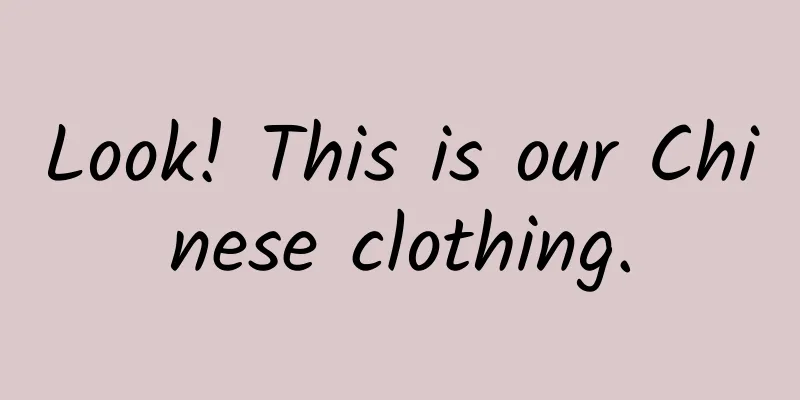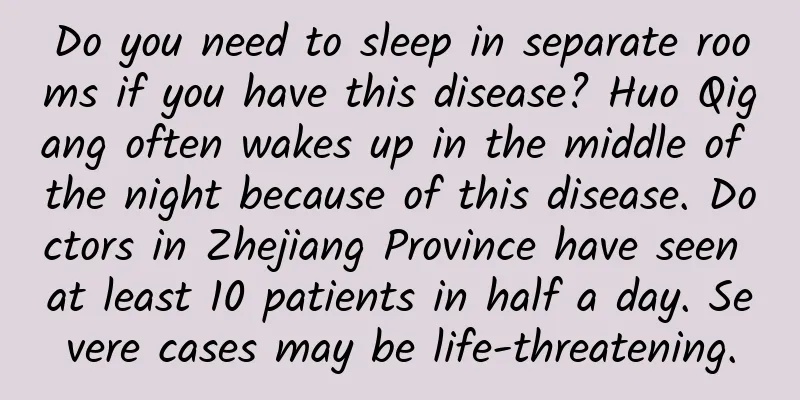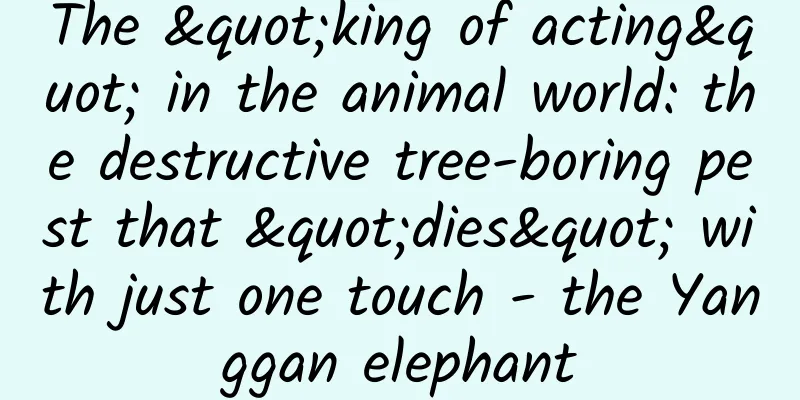Look! This is our Chinese clothing.

|
Millennium China Glorious clothes That is (Cao Zhi, "Beauty") ▼ "How fluttering her silk dress is, her hems swaying in the wind." That is (Li Bai's "Qingping Diao") ▼ "The clouds are like clothes, the flowers are like faces, the spring breeze blows over the threshold and the dew is gorgeous." That is even more (Wang Wei, "An Essay on the Early Morning Visit to Daming Palace with Jia Sheren") ▼ "The gates of the palace are opened in the Ninth Heaven, and people from all nations pay homage to the emperor." (Long picture of costumes of people from different dynasties, painting by Liu Yonghua, drawing by Hanqing/Planet Research Institute) ▼ How rich is Chinese clothing? Why are they so colorful? Please follow the Planet Research Institute Take a journey through thousands of years of clothing 01 Wear beautiful Prehistory - Shang and Zhou Dynasties Looking back tens of thousands of years The people living on this land Already learned to sew clothes with bone needles (The bone needle from the Paleolithic period unearthed from the Zhoukoudian site in Beijing has a needle hole of only a few millimeters, which means that the drilling technology at that time had reached a considerable level. Image source: @National Museum of China, map by @Wang Shenwen/Planet Research Institute) ▼ Maybe it was inspired by making ropes and bamboo baskets Around 7000 BC Chinese ancestors began to weave cloth from plant fibers To improve weaving efficiency The " spinning wheel " that used the inertia of pottery to twist thread appeared (Schematic diagram of the spinning wheel spinning principle; the patterns on the spinning wheel may bring rare joy to the boring work, photographer @路客看看, map @王申雯/星球研究院) ▼ Also used to tie lines The " waist loom " that tightens the lines for easier weaving (Please watch in horizontal mode, the principle of the waist machine is shown; this weaving method is still used by some ethnic minorities in my country today, map by @王申雯/星球研究院) ▼ In that era when productivity was extremely backward Getting fabric is not easy So the shape of the clothes is relatively simple Simply join two narrow pieces of cloth together and tie them with a straw rope. Maybe it's their daily wear. (Sketch of the production method of "Guantouyi", drawn by @Hanqing/Planetary Research Institute) ▼ As society continues to develop The function of clothing is no longer just to cover up and keep warm It is also endowed with a lot of aesthetic concepts It is the best stage to show yourself (Some figures in the rock paintings seem to show the various ways of wearing a "bed sheet", map by @Hanqing/Planet Research Institute) ▼ Competition becomes the fun of life Exposed body parts It is paired with a variety of accessories (The upper picture shows a fashionable combination necklace from the Neolithic Age; the lower picture shows a gold earring, photographer @张勇&脉影, map @王申雯/星球研究院) ▼ People also cut their hair and curled it Or tie it up in different styles (Hair styles of some cultural relics, photographers @脉影&袁欢欢&张艳&龙世杰, map @汉青&王申雯/星球研究院) ▼ Then put on a ring-shaped forehead band or crown Insert a hairpin or comb Dress up as best you can (Top: Golden crown belt; Bottom: Ivory comb with carved spiral patterns, photographer @张艳&柳叶氘, map @王申雯/Planetary Research Institute) ▼ Greatly rich material resources Promoted the maturity of the clothing system In the Shang Dynasty, people generally wore cross-collared clothes. Wear a skirt-like garment underneath (cháng) Formed the mainstream style in the Central Plains (Structure diagram of top and bottom garment, photographer @鞠潇, map @汉青/星球研究院) ▼ Various details design Practical functions are not prominent But perhaps it can express people's inner thoughts Yearning for a better life But the so-called "beauty" is not easy to obtain Only standing at the pinnacle of power To enjoy the most luxurious dress 02 Wearing level Shang and Zhou Dynasties - Qin and Han Dynasties When the country was founded Everyday clothing is slowly integrated into political life Proves people's class and wealth (Image of a Shang noble man, painting by Liu Yonghua, photographers by Liu Peng & Liu Ye Deuterium, drawing by Han Qing/Planet Research Institute) ▼ Kudzu, which can grow everywhere Mainly used by civilians Precious silk is the source of clothing for the nobility Jade ornaments worn on the body Can represent the owner's origin (Fu Hao was the wife of King Wu Ding of the Shang Dynasty. 755 jade artifacts were unearthed from her tomb; the picture below shows a simple and beautiful jade phoenix, photographer @柳叶氘, map @王申雯/Planetary Research Institute) ▼ How many patterns are there on the fabric? Can represent the nobility of the owner The more complicated and inconvenient the clothing is The more it reflects the characteristics of the nobility's "particularity" (Comparison of the images of slaves and nobles, image source @Institute of History and Philology, Academia Sinica & Fu Hongchao, map @Hanqing/Planetary Research Institute) ▼ With the advancement of dyeing technology Color is also marked by class (In the Yin-Yang and Five Elements theory that appeared in the Spring and Autumn Period and the Warring States Period, the five colors of black, white, red, green, and yellow correspond to the "five elements" as positive colors, symbolizing nobility. Photographer @柳叶氘, map @王申雯/Planetary Research Institute) ▼ In order to better rule the lower classes The Zhou Dynasty even monopolized special styles and colors. Constructed a huge clothing system It became an important symbol of feudal society for thousands of years. (According to the Han Dynasty's "Book of Rites", "Zhou people value red", this statement may not be reliable; the picture below is a schematic of the image of a Western Zhou man, painted by @刘永华, photographed by @雾雨川&柳叶氘, and drawn by @王申雯/星球研究院) ▼ The best of the best It is the crown system used in national sacrificial ceremonies. Contains a lot of symbolic meaning (Image of the emperor's crown, drawn by @Hanqing/Planetary Research Institute) ▼ The black plate of the crown symbolizes heaven. The red paint under the board symbolizes the ground The overall shape is low in front and high in the back, implying humility. (Nine-feathered crown of King Luhuang of Ming Dynasty, photographer @阮浩/Shandong Museum, map @王申雯/Planetary Research Institute) ▼ The lower reel is inserted with a jade hairpin. There are round beads on both ends, which means not to listen to slander. The pendants on the board are hung with colorful jade beads with colorful silk ropes. Meaning: Do not look at evil (Reconstruction diagram of the twelve-tasseled crown. The twelve-tasseled crown can only be worn by the highest ruler. Map by @王申雯/Planetary Research Institute) ▼ The crown and robes are divided into 6 types according to different occasions. The cuffs are wide and the waist is decorated with various items (Please watch in horizontal mode, six types of crowns and robes are shown in the figure, drawn by @王申雯/Planetary Research Institute) ▼ The most special There are 12 patterns embroidered on clothes. Encompassing everything in the universe Symbolizes the ideal imperial character (Sketch of the twelve chapter patterns, drawn by @Hanqing/Planetary Research Institute) ▼ The emperor wearing this dress can only sit upright It seems to exude a mysterious power that transcends the world. Other people's clothing standards cannot be exceeded Such a complicated ritual system extends to all aspects And formed various customs among the people (Illustration of the men's capping ceremony and the women's hairpin ceremony, drawn by @Han Qing & Wang Shenwen/Planetary Research Institute) ▼ However, the constraints of the system People's pursuit of beauty cannot be curbed The Zhou royal family declined during the Spring and Autumn Period and the Warring States Period In order to strengthen their power, various states encouraged people to cultivate agriculture and sericulture. Textile industry booms (Please watch in horizontal mode. The exquisite clothing of the Warring States period represents the level of textile production at that time. Photographer: @鞠潇, map: @王申雯/Planetary Research Institute) ▼ The Chu State in present-day Hubei Province Stunning the world with its strange and beautiful patterns (Luo Rouge with dragon, phoenix and tiger embroidery, photographer @柳叶氘, map @王申雯/Planetary Research Institute) ▼ Qi State, located in present-day Shandong Famous for its exquisite embroidered fabrics (Please watch in horizontal mode. The painted pottery figurines of music and dance present a large-scale song and dance performance from more than 2,000 years ago. The patterns on the figurines' costumes are clearly visible. Photographer: @一一的博物集, map by @王申雯/星球研究院) ▼ Textile boom Changed the distribution pattern of clothing materials to a certain extent People ignore etiquette and boldly follow fashion trends Creatively sew the top and bottom Created the classic clothing deep-collared robe that was popular until the Qin and Han dynasties It can be worn by everyone regardless of wealth (The deep robe is also called the long robe; the picture below is a schematic diagram of the structure of the deep robe, drawn by @Hanqing/Planetary Research Institute) ▼ Lengthen the collar The deep robe that needs to be wound in a spiral is called " Qu Ju ". Rich in strong aesthetic characteristics (Image of a noble woman wearing a qu-qi skirt in a silk painting of dragons and phoenixes, photographer @Ren Junhao, map @Wang Shenwen & Han Qing/Planet Research Institute) ▼ Some deep clothes There are multiple layers of pleats on the cuffs Decorative lace trim at hem (Top: Painted pottery dancing figurines; bottom: pottery dancing figurines with long trailing robes, photographer @柳叶氘&花生蛋, map @王申雯/星球研究院) ▼ The neckline reveals the inner garment When three layers can be exposed, it is called " triple clothing " (The “triple garment” adds layers of beauty to the collar; top: a painted kneeling maid figurine; bottom: a colored male figurine, photographer @柳叶氘, map @王申雯/Planetary Research Institute) ▼ The man wears a crown hat Women may wear a bun (Top: Types of official hats and caps in the Han Dynasty; Bottom: A painted female figurine with a Han Dynasty horse bun, photographer @风沉郁, map @王申雯/星球研究院) ▼ The overall image is elegant and atmospheric Showing a moving atmosphere (Character image on Han T-shaped silk painting, photographer @柳叶氘, map @王申雯/Planetary Research Institute) ▼ More diverse clothing styles In a great transformation of national integration Slowly opening the curtain 03 Wear diversity Qin and Han Dynasties - Sui and Tang Dynasties In huge The Underground Mausoleum of the First Qin Emperor in Xi'an There are nearly 8,000 terracotta warriors and horses of various shapes buried here. It was this short-lived dynasty's clothing system The best true portrayal in existence Showing the demeanor of the Qin Dynasty more than 2,000 years ago (The facial expressions of each terracotta warrior are lifelike, photographers @赵斌&Scorpion&张天柱, map @王申雯/Planet Research Institute) ▼ They all wear tops and pants This type of structure only appeared on a large scale during the Warring States Period. The pants in the Central Plains originally had no crotch You must wear long clothes to prevent exposure (The evolution of the shape of "pants", drawn by @Hanqing/Planet Research Institute) ▼ The northern nomadic people at that time were good at riding and shooting. Wear narrow-sleeved tops and crotch-lock pants In order to strengthen its army, Zhao State, which was impacted by the grassland civilization, Made a shocking decision Promote " Hu clothing and horse riding " (Sketch of the Xiongnu characters, painting by Liu Yonghua, photographers by Chen Jinting & Liu Yusheng, drawing by Hanqing/Planetary Research Institute) ▼ Hufu is very convenient for daily activities Once promoted, it became popular among the people Zhao's military strength thus grew rapidly. This is the first time in the history of Chinese clothing The first big change (Sketch of Qin characters, painting by Liu Yonghua, photographer by Zhang Tianzhu & Lu Ke Kanjian, drawing by Hanqing/Planet Research Institute) ▼ As the country's territory expanded The trend of diversified integration is more obvious High-end textiles are exported to Europe and Asia Among them, the " inscription brocade " that can weave words It is found in many places in Xinjiang. (“Five Stars Rising from the East, Bringing Good Luck to China” came from Shu to Xinjiang along the Silk Road. Photographer: @刘玉生, map: @王申雯/Planet Research Institute) ▼ Uprisings and unrest occurred frequently during the Wei, Jin, Southern and Northern Dynasties Dozens of grassland ethnic groups migrated south to the Central Plains Since then, China has ushered in an all-round integration (The image of the characters in the Wei, Jin, Southern and Northern Dynasties, their clothing has been completely renewed, painting @Liu Yonghua, photographer @Walnut Egg & Willow Leaf Deuterium, map @Hanqing/Planet Research Institute) ▼ Hu clothing entered the palace and the trouser legs became wider and wider Some use a 1 meter long ribbon to tie Like today's bell-bottom pants (Top: The fashionable outfit of the pottery figurine playing the pipa; Bottom: The painted figurine of a military official, photographer @傅鸿超&Shaanxi History Museum, map @王申雯/Planet Research Institute) ▼ The belt hook Gradually it became used to fix the horse pad on the horse's back. A more secure buckle (Schematic diagram of the principle of "belt hook" and "belt buckle", photographer @脉影, map @王申雯/星球研究院) ▼ Nomads used to wear it around the waist "Dié (dié) xiè (xiè) belt" for hanging various small items Also worn by people in the Central Plains (Schematic diagram of the structure of the "蹀躞帶", which can be equipped with self-defense weapons and "amulets", etc., and can be called a multi-functional belt. Photographer @樊小喆, map @王申雯/Planetary Research Institute) ▼ In addition, Buddhism grew The grand scene of "480 temples in the Southern Dynasties" was formed Women's makeup has changed Light "plain makeup" with pink, white, black and black The " forehead yellow makeup " that imitates Buddha statues appeared (illustration by Huang Zhuang, map by @Hanqing/Planetary Research Institute) ▼ In this special era Everywhere there are swords and power struggles Metaphysics and Taoism became a refuge Scholars love to wear loose shirts Even let the hair down to show an unruly attitude (Please watch the excerpt of "Seven Sages in the Bamboo Grove" in horizontal screen, photographer @柳叶氘, map @汉青/星球研究院) ▼ Less restraint of etiquette Human nature can be freely extended Women also love flowing clothes Multiple ribbons tied in the waist belt When walking, butterflies and swallows dance, which is very charming (Portraits of donors at Mogao Grottoes, photographer @孙志军, map @王申雯/Planetary Research Institute) ▼ Cao Zhi, a great talent at that time The beautiful Luoshen depicted is a representative example. As the saying goes (Cao Zhi's "Ode to the Goddess of Luo River") ▼ "Graceful as a startled swan, graceful as a swimming dragon" (Please watch the excerpt of "The Goddess of Luo River" in horizontal screen, photographer @张艳, map @汉青/星球研究院) ▼ Even the carved Buddha statues All of them were influenced by this type of clothing. From rough and strong to elegant and beautiful (The wrinkles on the clothes of the Buddha statues in Yungang Grottoes look like they have just come out of the water. Photographer: Lang Jianqiang) ▼ To the 8th century AD The unprecedentedly powerful Tang Empire It has reached the pinnacle of fusion More than 300 countries and regions have exchanges with it The capital is filled with people of all kinds. (The Tang capital Chang'an was an international metropolis at the time; the picture below is a tri-color pottery camel carrying a dancer, photographer @柳叶氘, map @王申雯/Planet Research Institute) ▼ Foreign merchants and envoys Wearing various types of clothing to parade around the city Dazzling Create a colorful social landscape (The foreigners at that time came from Gaochang, Qiuci, Shule, Khitan, Mohe, India, Silla, Japan, etc.; the picture above is a painted black figurine wearing leopard print pants and leading a camel; the picture below is a painted wooden figurine of a foreigner leading a camel, photographer @柳叶氘, map @王申雯/星球研究院) ▼ Men are popular with wearing futou Wearing boots (How to wear a futou and its types, illustration by @王申雯/Planetary Research Institute) ▼ The " cut-hip robe " with slits on the left and right is worn as an outer garment Then tie a leather belt around your waist (Image of officials and attendants in the Tang Dynasty, painting by Liu Yonghua, photographers by Liu Ye Deuterium and Sun Zhijun, drawing by Han Qing/Planetary Research Institute) ▼ Women's clothing is more diverse Women dressing as men has become a trend Be bold and show your personality (Tang Sancai female figurine in men's clothing, whether it is a female figurine is still in doubt, photographer @脉影&朱金华, map @王申雯/星球研究院) ▼ " Ruqun " with a top and a skirt It replaced the deep-collared robe and was favored by aristocratic women. (Pottery painted female figurines, etc., photographer @苏李欢&李文博&arterial shadow, map @王申雯/Planetary Research Institute) ▼ Some skirts have waists that are above the chest. Wear a light and transparent shirt and a shawl The underwear is vaguely visible and makes people daydream (The scene of noble ladies admiring flowers and strolling in the garden in "Ladies with Flowers in Their Hairpins" was created in the Song Dynasty by some scholars. Photographer @Wikimedia Commons, map by @Wang Shenwen/Planet Research Institute) ▼ Some wear a " curtain hat " with a brim and a mesh embellishment. A beautiful face swaying in the wind (Painted figurines of ladies riding horses and wearing veiled hats, photographer @柳叶氘, map @王申雯/Planetary Research Institute) ▼ Skirt types surpass previous generations There are many patterns of embroidery Perfectly showing the plump figure of women in the Tang Dynasty Yang Guifei, the favorite concubine of Emperor Xuanzong of Tang The "pomegranate skirt" she wore once made everyone crazy (Please watch the excerpt of "Lady Guoguo's Spring Outing" in horizontal screen. There is still controversy about whether Lady Guoguo is the "male" in the front or the female in the back; Lady Guoguo is Yang Guifei's sister, and they lived a very luxurious life. Image source @Wikimedia Commons, map @Wang Shenwen/Planet Research Institute) ▼ Hairstyles of women in the Tang Dynasty Also full of endless imagination (Various types of hair buns of unearthed female figurines, and painted pottery female figurines with double-ring Wangxian buns, photographer @脉影&柳叶氘, map @王申雯/星球研究院) ▼ Some will also be on the bun Insert small combs and other accessories for decoration (Golden hair ornaments inlaid with turquoise, and more hair ornaments from the Tang Dynasty, photographer @脉影, map @王申雯/星球研究院) ▼ The overall makeup is very modern I like the exaggerated red makeup. (Silk painting of a woman holding a cup, photographer @柳叶氘, map @王申雯/Planetary Research Institute) ▼ The "flower ornaments", "red slant" and "face dimples" on the face Everything (Sketch of makeup types for women in the Tang Dynasty, drawn by @Hanqing/Planetary Research Institute) ▼ (Sketch of the steps for women to put on makeup in the Tang Dynasty, drawn by @Hanqing/Planet Research Institute) ▼ besides Fabric patterns influenced by foreign culture It combines the typical Tang style It was widely used by the court and the people. (Sketch of Tang Dynasty patterns, where the Baoxianghua is a combination of Buddhist lotus patterns and Tang Dynasty peony, and the Lianzhu pattern is influenced by the Persian Sassanid Dynasty. Photographer @花生蛋&柳叶氘, map @王申雯/星球研究院) ▼ The clothing culture of the Tang Dynasty Absorbed by other countries Still shining with endless brilliance (The women in Japanese paintings have a strong Tang Dynasty style, picture source: @Visual China) ▼ This is really a These days seem like surprising times Extremely open and inclusive Everywhere we look, people are grateful for the country's prosperity. The unparalleled confidence generated (Tri-color female figurines with dressing and sitting, etc., photographers @柳叶氘&勾炳宸&脉影, map @王申雯/星球研究院) ▼ In the ups and downs of history This confidence did not last. Clothing styles gradually return to elegance The glory of the Tang Dynasty was worn away It also means that it will become more refined. More mature 04 Wear exquisite Song and Yuan Dynasties - Ming and Qing Dynasties After the chaos and turmoil at the end of the Tang Dynasty The social outlook of the Song Dynasty was very different Cheng-Zhu Neo-Confucianism advocates "preserving the principles of heaven and eliminating human desires" It became an important social trend at that time. The " Daoist robe " inherited from the previous generation of men's clothing is simple and plain (Portrait of Su Dongpo, image source @Wikimedia Commons, map @Wang Shenwen/Planet Research Institute) ▼ There are more and more rules for women. There was even foot binding. Slenderness becomes the mainstream aesthetic of women Wearing a " bèi " that highlights a thin figure Become a fashionable outfit for going out (Woman wearing a jacket in "Gala Picture", photographer @柳叶氘, map @王申雯/Planet Research Institute) ▼ After a century of economic development The overall prosperity of the Song Dynasty It surpassed the Tang Dynasty and reached the peak of all dynasties At that time, there were more than 100 clothing-related industries in Kaifeng, Tokyo. The citizen class is extremely active The whole city can be described as "a mountain of clothes and a sea of clothes". (Please watch the scene of Kaifeng city in "Along the River During the Qingming Festival" in horizontal screen, image source @Wikimedia Commons, map @Wang Shenwen/Planet Research Institute) ▼ Rigid traditional etiquette People's restless hearts are becoming increasingly uncontrollable In order to show off their wealth and beauty People pay more attention to the details of clothes Especially the neckline and front area Weaving in gold thread or adding exquisite embroidery Low-key yet luxurious (Song Dynasty brocade queen's dress with colorful phoenix pattern, photographer @脉影, map @王申雯/Planetary Research Institute) ▼ 1243 AD A 17-year-old girl died Her grief-stricken relatives are at her grave A total of 354 pieces of clothing and silk fabrics were placed Covers almost all high-end fabrics Styles range from underwear to socks (Clothing unearthed from Huang Sheng’s tomb, photographer @脉影&花生蛋, map @王申雯/星球研究院) ▼ This exquisite and gorgeous It is also clearly reflected on the top of the head of women in the Song Dynasty. To create a high bun Shops specializing in selling "wigs" have appeared The headdresses are getting bigger Sometimes, seasonal flowers are also added. (Men in the Song Dynasty also loved to wear flowers in their hair; the picture below shows a man wearing flowers in his hair in "The Peddler", picture source @Taipei Palace Museum, map @Wang Shenwen/Planet Research Institute) ▼ During the Yuan Dynasty The Mongols have a very different style from the Central Plains I was quickly infected by the exquisite life and luxurious style. A large amount of fabric woven with gold thread The nobles not only wore dazzling gold and brocade Even the bedding and tents were not spared (Image of a Yuan man, painting by Liu Yonghua, picture source by China National Silk Museum, drawing by Hanqing/Planet Research Institute) ▼ The quality and variety of clothing in the Ming Dynasty flourished The popular product at that time, " Nanjing Yunjin " Need to weave in gold thread and animal feathers Therefore, it has the reputation of "an inch of brocade and an inch of gold". (Modern Nanjing Brocade, photographer @戚伟民, map @王申雯/Planet Research Institute) ▼ If you want to make special robes The complexity is staggering It requires a two-story " flower building " loom to pull flowers I can only weave 2 inches a day. (Exquisite brocade brocade with phoenixes wearing peony flowers from the Ming Dynasty, photographer @风沉郁, map @王申雯/Planetary Research Institute) ▼ Thanks to the craftsmen's superb metal craftsmanship Many accessories are exquisite (A collection of various Ming Dynasty accessories, photographers @柳叶氘&苏李欢&路客看看&傅鸿超&唐一帆, map @王申雯/星球研究院) ▼ The " Nine Dragons and Nine Phoenixes Crown " worn by Empress Xiaoduan of the Ming Dynasty Welding with gold wire stacking process There are more than 100 natural rubies in the crown More than 5,000 pearls (Top: Phoenix crown of Empress Xiaoduan, bottom: Portrait of Empress Xiaoduan, image source @National Museum of China & Wikimedia Commons, map by @Wang Shenwen/Planet Research Institute) ▼ besides The clothing patterns of the Ming Dynasty were also rich Carefully depicts many auspicious meanings (Gold-woven longevity character dragon cloud shoulder and full-sleeved dragon railing decoration satin lining pleated robe, photographer @戚伟民, map @王申雯/Planet Research Institute) ▼ This symbol symbolizes The use of official uniforms in the Ming Dynasty reached its peak First, the Tang Dynasty system was followed to divide official uniforms into three categories by color. Later, embroidery products with a length and width of 40 cm were used. Distinguishing the ranks of civil and military officials Civil officials used bird patterns to symbolize literary talent (Mingwen Guanbuzi, photographer @脉影, map @王申雯/Planetary Research Institute) ▼ Military officers use animal patterns to symbolize bravery (Ming Dynasty military officer patch, image source @周坤/Shandong Museum, map @王申雯/Planet Research Institute) ▼ They all wore black gauze hats with two wings erected behind the crown. The whole body is exquisite and decent (Image of a Ming man, drawing by Liu Yonghua, photographer by Zhou Kun/Shandong Museum, drawing by Han Qing/Planetary Research Institute) ▼ The eunuch Zheng He who made seven voyages to the West With a huge team of nearly 30,000 people Like a large-scale clothing display group of the Ming Dynasty Sailing to different countries Brought Chinese clothing and aesthetics (Please watch the excerpt of "Ming Xuanzong's Pleasure Tour" in horizontal mode, showing the attire of Ming Dynasty officials when traveling. Image source: @Wikimedia Commons, drawn by @王申雯/星球研究院) ▼ Exquisite and gorgeous in various forms This is the temperament of the entire Ming Dynasty clothing. It is a model of ancient Chinese clothing art. (The horse-faced skirt is a classic skirt style for women in the Ming and Qing dynasties. Photographer: @Chuanhou & Zhoukun/Shandong Museum, map by @Hanqing/Planetary Research Institute) ▼ Textile technology continued to improve during the Qing Dynasty Emperors and nobles often advocate luxury style The exquisiteness of the clothing It has reached the pinnacle of ancient China. There are countless types of fabrics (Various Qing Dynasty textiles, photographer @脉影, map @王申雯/星球研究院) ▼ Countless fabric colors (Autumn-colored brocade silk with colorful cloud bats and golden dragon auspicious robe material, photographer @脉影, map @王申雯/Planetary Research Institute) ▼ Countless exquisite accessories (Collection of various ornaments from the Qing Dynasty, photographers @傅鸿超&脉影&柳叶氘&肖银宁, map @王申雯/星球研究院) ▼ Buttons that appeared in the Song and Yuan dynasties It began to be widely used in clothing instead of laces. Styles such as "stand-up collar" also appear in large numbers Opening up a new look for clothing (Nobles often used buttons made of gold, silver, jade and other gemstones; the picture below shows buttons unearthed in the Qing Dynasty, photographer @路客看看&脉影, map @王申雯&汉青/星球研究院) ▼ But unfortunately When the Qing Dynasty rulers entered the Strictly order the Han people to change to wearing Manchu clothing and shave their heads and keep braids (The kun (kūn) hairstyle of the northern nomadic people, shaving the head; the Qing government later promulgated the "Ten Things to Follow and Ten Things Not to Follow", among which Han women could retain the Han clothing system, map by @王申雯/星球研究院) ▼ Under the red walls and yellow tiles The emperors and ministers who came and went They all wore costumes with Manchu characteristics. (Top: Bright yellow satin embroidered with golden dragon court robe; Bottom: Portrait of Emperor Kangxi of the Qing Dynasty, image source @脉影&Wikimedia Commons, map by @王申雯/星球研究院) ▼ Use etiquette with Manchu characteristics (The horseshoe sleeves on the bright yellow satin embroidered flat golden dragon brocade dragon robe, photographer @傅鸿超, map @王申雯/Planet Research Institute) ▼ Manchu women in the palace stepped on the "bottom of the flower pot" Wearing a straight robe The general dress is "Qitou" (Sketch of Qing Dynasty figures, painting by Liu Yonghua, photographer by Artery Shadow & Visual China, drawing by Hanqing/Planetary Research Institute) ▼ Han women Or wear a "horse-faced skirt" or a "peony head" Inheriting the last style of the Ming Dynasty (The image of a Han Chinese woman from the Qing Dynasty on the scroll of "Snow Beauty", photographer @柳叶氘, map @王申雯/Planet Research Institute) ▼ 1840 The West opened the door to the empire by force As the last feudal dynasty of China came to an end The history of ancient Chinese clothing has come to an end Women either perm their hair or wear cheongsam Men either have braids or wear suits A new era is coming (Sketch of the Republic of China and modern figures, drawing by Liu Yonghua, drawing by Hanqing/Planet Research Institute) ▼ 05 end So far This fashion show spans 7000 years Welcomed the most familiar look Today we are free to wear (On January 28, 2017, Yuncheng, Shanxi Province held the "Young Chess King Chu-Han Contest". The "Little Chess Kings" were playing chess in ancient costumes. Image source: @Visual China) ▼ Casual Dress (In April 2020, tourists in the Xitang Ancient Town scenic area in Jiaxing, Zhejiang Province dressed in ancient costumes and took a cruise to enjoy the cherry blossoms. Image source: @Visual China) ▼ The feudal confinement of the past With the years that have passed Gone forever (In April 2021, tourists participated in the Spring Hanfu Parade at Fantawild Oriental Myths Park in Jingzhou, Hubei. Image source: @Visual China) ▼ And the good old days With hundreds of millions of ancient clothes Rotting in the ground, no longer in its former glory (The unearthed Susha Zenyi from more than 2,000 years ago is known as a national treasure. It was destroyed and then restored. Photographers @王瑞&卢明浪, map @王申雯/Planet Research Institute) ▼ In order to reproduce The true appearance of ancient clothing Countless experts and scholars are working hard Restore the surviving cultural relics piece by piece A beautiful "country of clothing" Only then can it be shown to the world (In April 2022, a large-scale ancient style fashion show was staged at the "Spring Flower Festival" opened in Longgang District, Shenzhen, and the streets were crowded with people. Image source: @Visual China) ▼ As the saying goes (Kong Yingda, The Commentary on Zuo Zhuan of the Spring and Autumn Annals) ▼ "China is known as Xia because of its great etiquette; it is known as Hua because of its beautiful clothing." Thousand-year-old Chinese clothing Immersed in the light and darkness of the times Accumulation of brilliant civilization Demonstrating the ups and downs of life This is the colorful Chinese clothing. It shouldn't be forgotten either. The Beauty of China This article was created by Written by: Zhou Luoyi Image: Pan Chenxia Design: Wang Shenwen & Han Qing Proofreading: A-Chun & A-Shao & Hu-Mian-Mian Special thanks Liu Yonghua, professor of the Stage Art Department of Shanghai Theatre Academy Genglin Children's Library Shandong Museum Shaanxi History Museum Expert review Department of Dyeing, Weaving and Fashion Art Design, Academy of Fine Arts, Tsinghua University Professor Jia Xizeng 【References】 [1] Huang Nengfu, Chen Juanjuan, et al. (eds.). Costumes of China: Seven Thousand Years of Chinese Costumes[M]. Beijing: Tsinghua University Press, July 2013. [2] Jia Xizeng. History of Chinese and Foreign Clothing[M]. Shanghai: Donghua University Press, 2021. [3] Sun Ji. Huaxia Clothing: Ancient Chinese Clothing Culture[M]. Shanghai: Shanghai Ancient Books Publishing House, August 2016. [4] Han Xianghua. Research on handicraft industry in the Central Plains from prehistoric times to the Xia and Shang dynasties[D]. Zhengzhou University, 2010. [5] Cui Guishun (Korea). Research on the Crown and Garments of Chinese Emperors[M]. Shanghai: Donghua University Press, 2007.12. [6] Li Ya. Chinese Makeup Throughout the Ages[M]. Beijing: China Textile Press, 2004.02. [7] Luo Yibo. Research on ritual costumes in the Han and Tang dynasties[D]. Suzhou University, 2011. [8] Wang Xueli. Study on the Clothing System of the Song Dynasty[D]. Zhejiang University, 2006. Planetary Research Institute Focus on exploring the extreme world from a geographical perspective. |
>>: Why is frozen shrimp so unpalatable? You are missing these steps
Recommend
Staying up late because of the epidemic? You will regret it someday!
With the frequent outbreaks of the epidemic, have...
How to generate high-quality backlinks for SEO?
Off-site SEO can also be said to be search engine...
Is drinking coffee a health-boosting or healthy thing? Let’s start with how coffee keeps us awake
Coffee has a refreshing effect on many people, bu...
Jiangsu 2020 College Entrance Examination Score Line: Jiangsu 2020 College Entrance Examination Admission Score Line Announced
The undergraduate score line that Jiangsu candida...
Postpartum recovery: abdominal shaping after cesarean section
Postpartum repair and cesarean section abdominal ...
How to play the project in the niche blue ocean headlines
Introduction to the teaching resources of project...
Say goodbye to the solar system, Voyager wants to tell aliens about human love
I saw my love, I flew to her side, and held out a...
Keep Competitive Product Analysis
With the continuous development of China's ec...
Lihe Finance: Financial General Knowledge and Business Analysis
Lihe Finance: Introduction to financial knowledge...
What you think is normal may actually be 9 manifestations of long-term anxiety! See how many of these you have?
Anxiety is an emotion that everyone experiences, ...
Scientific Exploration丨China’s first major rescue: How to find an escape route for whales away from human interference?
At 5:30 in the morning of April 20, the rising su...
How to write an excellent event planning and implementation plan?
To become a qualified Internet operator, planning...
200 million people have this chronic disease that damages blood vessels the most! Do these 6 things to protect your blood vessels
Jianjian: Did you know? The latest data shows tha...
How to maximize the effect and benefits of promotion?
Maximize the acquisition of target users Acquisit...









